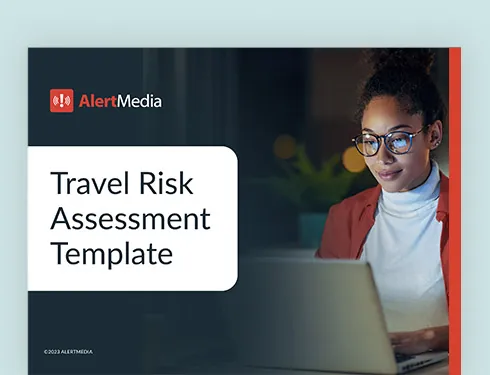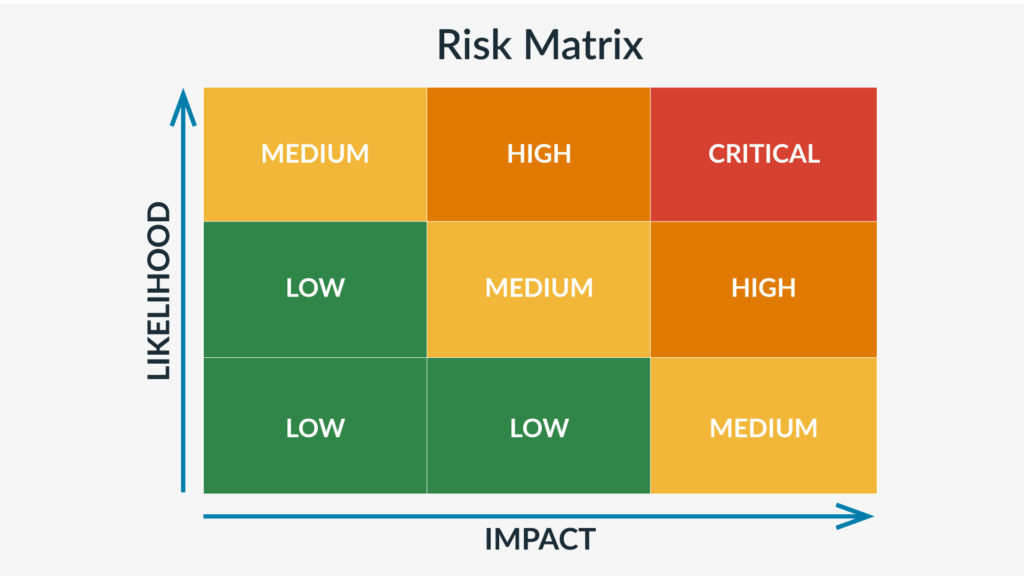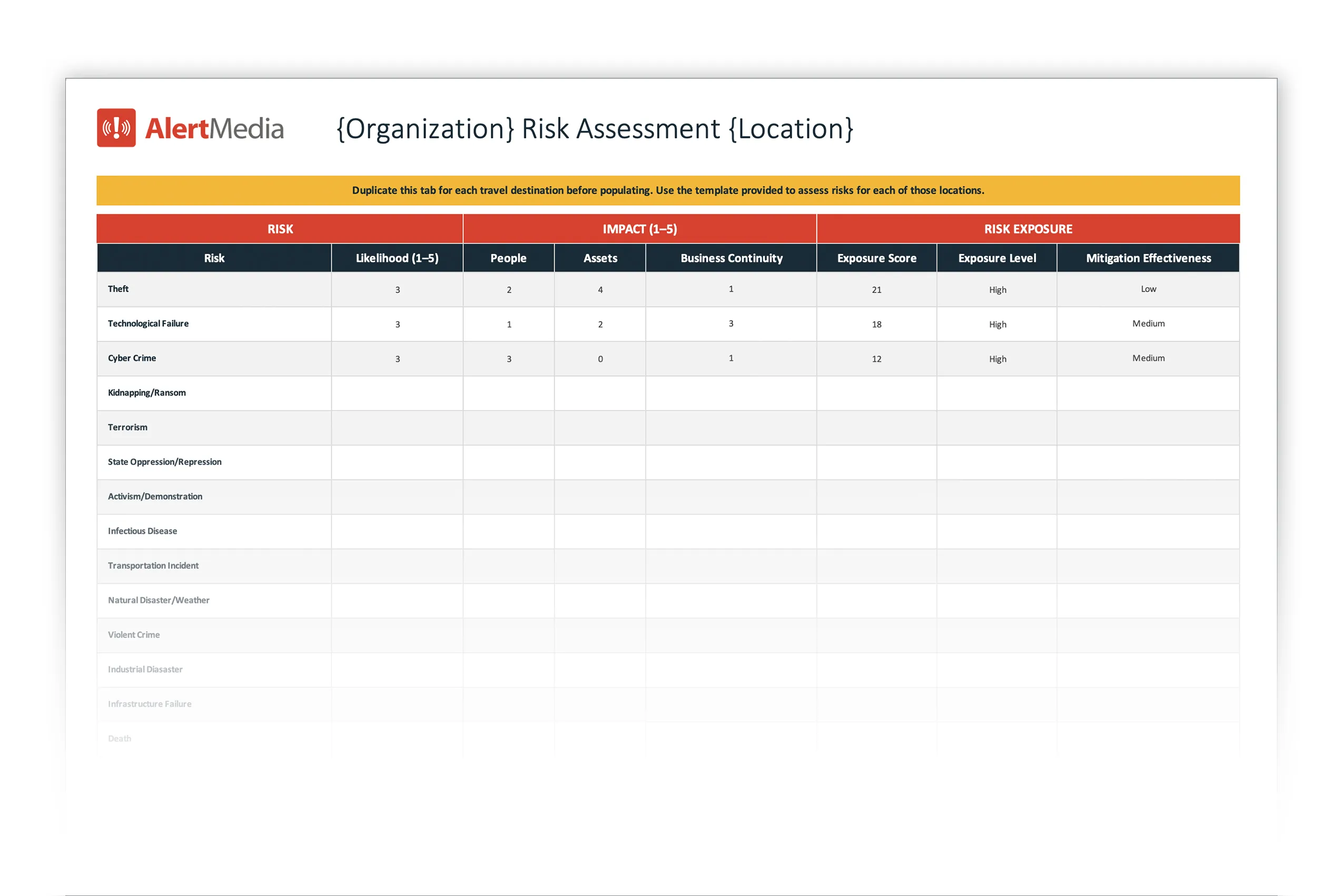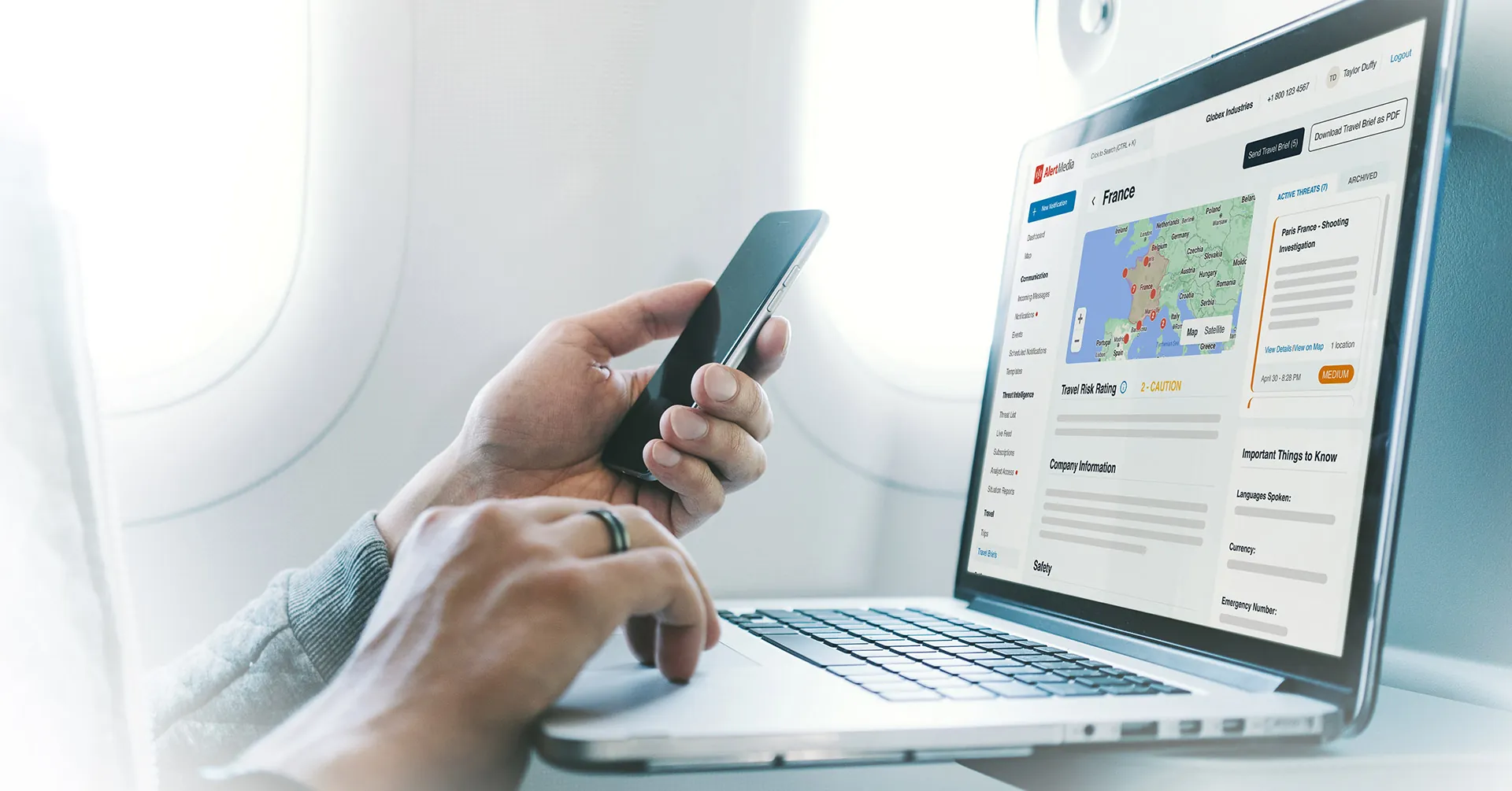
How to Use a Risk Assessment Template for Business Travel
Don’t let a business trip turn into a travel nightmare by skipping the prep. Understand your risks ahead of time with a business trip risk assessment template.

According to the GBTA 2024 Business Travel Index Outlook report, travel spending is expected to surpass $2.0 trillion by 2028. And over 80% of surveyed business travelers reported that business travel is worthwhile for achieving corporate objectives. But protecting these employees on the road can be complicated. Business trips often introduce threats to employee health and safety despite the valuable business opportunities.
Travel managers aren’t the only ones concerned about safety away from home. Our recent State of Employee Safety Report found that safety is a top concern for business travelers, ranking second only to travel delays and disruptions. Less than half (40%) of travelers reported feeling extremely safe when traveling for work.

Investing in travel insurance and providing a robust travel policy are great ways to help fulfill your duty of care and keep your employees safe. Still, these are only the start of an effective travel risk management program. To keep your travelers safe, you must know what to prepare for. This is where a travel risk assessment comes in. When you know what might put your travelers at risk, you can provide guidance and protection so employees feel safer and business can run as usual, even from far away.
Using a travel risk assessment template is a great way to determine your travel risks at scale, even with a small security team, high travel demands, and multiple travel destinations. This article will walk you through how to perform a business trip risk assessment using a template (you can download one for free here) so you can focus less on documentation and more on protecting those employees on the road.
Download Our Travel Risk Assessment Template
The Minnesota Twins Major League Baseball (MLB) team hosts an average of 2 million fans each year at Target Field, their home stadium in downtown Minneapolis. In addition to baseball games, the 38,000-capacity Target Field also hosts a wide range of events, including concerts, conventions, and community events throughout the year—all of which require a robust solution to ensure the safety of everyone involved. But even when the MLB team is far from home, they need a way to stay aware of threats.
Jeff Beahen, Senior Director of Security for the Minnesota Twins, uses AlertMedia’s live location-based safety alerts to inform the security team of emerging threats that may impact staff or players. “Knowing what’s occurring in our stadium on a non-game day is great—but that’s not where my players and staff are,” says Beahen. “We need real-time, relevant data for Miami, New York, Chicago, Detroit, or anywhere else the team is playing. Access to that intelligence is one of the greatest benefits of AlertMedia for our organization.”
When You Do (and Don’t) Need a Travel Risk Assessment
Any time your employees travel, there will be some risk—be it a risk of travel delays or disruptions or more extreme risks like kidnapping, terrorism, or natural disasters. But depending on your travel demands and locations, your safety needs will vary.
If your company is based in Cincinnati and you primarily have remote employees from across the Midwest traveling to in-office events twice a year, you’ll likely need a less complicated risk assessment form than a company sending its C-suite executives to London, Mexico City, Hong Kong, and other international cities every other month.
Pre-authorizing travel destinations
Some businesses use the travel risk management strategy of creating lists of travel destinations and categorizing them ahead of time based on their overall business travel risk level. Delia Midamba, Head of Physical Security at Cloudflare, explained the process her team uses to ensure they have properly assessed their risks for travel requests.
“We take a couple of different approaches. The first is an ‘allow’ list. Those are the countries where if you’re going to work there for less than 20 days, don’t ask us, you’re fine. Just go ahead and go. We’ve evaluated the security risk. We’ve evaluated the tax implications. And we’ve said if it’s less than 20 days, have fun. Then there are the countries that are not on the allow list. That, at least, has allowed us to whittle down how much research we have to do when an employee reaches out. But when they do reach out, we have to check: What are the safety implications? What are the cybersecurity implications? And then come to a determination on whether the employee can go and what precautions we need to put in place for them to be able to.”
—Delia Midamba, Head of Physical Security at Cloudflare
Performing assessments ahead of time for frequent travel destinations means you don’t have to scramble when a trip request lands on your desk. The more complicated your travel situation, the more beneficial a risk assessment is. From those assessments, it’s easy to create lists of travel destinations that are automatically approved from a safety standpoint—as Delia does at Cloudflare—that you can direct employees to when they are looking into travel.
Why Use a Risk Assessment Template
For a risk assessment to be the most useful to your business, you need a clear understanding of a location’s possible threats, the likelihood of those threats impacting your travelers, and an estimation of how the risk would affect your business. It’s also helpful to compare high- and low-risk locations and to compare risk scores to previous assessment forms—to see if locations are growing more or less dangerous over time.
Going beyond a risk matrix
A risk matrix (shown below) is a helpful tool for taking a high-level view of risk, but it doesn’t always allow for the level of granularity that travel risk assessments require. When looking at safety in complicated situations like travel, especially when assessing risk at scale for a larger organization, it’s helpful to have a tool that can accommodate all the information you’ll need to document.

A more robust template like this one, which you can download for free, is a more streamlined way to ensure you know what to prepare your organization for and inform your employees about when they are traveling.
 Preview of Travel Risk Assessment Template
Preview of Travel Risk Assessment Template
How to Perform a Business Travel Risk Assessment
The travel risk assessment process has six steps, whether you’re using a template or documenting it in some other way. Here’s what it looks like.
1. Determine your travel destinations
To know the risks of your travel plans, you must know where you’re going. Are your employees primarily traveling between facilities in the contiguous United States? Do you have frequent international travel to other business partners? Create a list of places where your team might travel.
Suppose you have remote/nomadic workers or employees planning to work from locations other than their homes for extended periods. In that case, you may consider adding these locations to your risk assessments. Your duty of care obligations also extend to protecting these employees, and there may be higher risks than the employees are aware of.

2. Research potential risks in those locations
Figuring out what risks your employees might face can seem intimidating, but plenty of resources are available to get you started. The U.S. State Department publishes travel advisories with significant threats and any travel warnings or more extensive travel restrictions in different countries. You can also look through public databases of crime rates, civil unrest, and public health emergencies. If you have a log of past incidents, you can also use those as examples.
The specific potential travel risks you find will vary depending on where your employees are traveling and any increased risk factors those employees will have. There may be some locations where high-level executives face an increased risk of kidnapping, and there are areas where LGBTQ+ employees will be at a higher risk for harassment and detention. Here are a few examples of potential threats to consider in your travel destinations:
- Terrorism
- Public health risks/infections disease
- Political unrest
- Crime/theft
- Civil unrest/demonstrations
- Extreme weather/natural disasters
- Travel disruptions
- Infrastructure failures
- Medical emergency
- Cyberattack
- Kidnapping/ransom
If you have access to a threat intelligence system, especially one with a threat history feature that shows past events in each area, this process will be more accurate and more accessible. Whether you’re pulling up threat history through your intelligence system or reviewing public advisories and incident logs, your travel risk management will benefit from this knowledge.
3. Determine the likelihood of those risks
“Wherever we go, we're armed with live threat intelligence at our fingertips. Whether navigating around road closures or bracing for severe weather, having timely and pertinent information about potential hazards gives us a leg up on our response.”Charles Adams Director of Security, The Minnesota Twins
To adequately prioritize and prepare for these risks, you need to know how likely they will happen. When estimating the potential likelihood of these risks in any given location, you may consider whether your company has faced the threat before, whether your employees are part of a frequently targeted group, whether the location is experiencing destabilization, and whether there are any trend lines in these threats that might indicate a rise in the rate of incidence.
It can also be helpful to consider if there are any employees with additional factors that might put them at high risk. Some risk factors might be employees with disabilities or medical conditions, women, LGBTQ+ employees, and religious or ethnic minorities.
4. Estimate the impact of those risks
Next, you’ll determine what the impact of those risks might be if they were to occur. An easy way to break this down into something more actionable is to assess the impact of a given risk on these three facets:
- People—Will this harm your employees?
- Assets—Is company-owned technology or IP in harm’s way?
- Business continuity—How much will this disrupt your business operations?
You can rank impacts within these three categories to create a numerical impact value. This will help you later if you are using an equation to calculate exposure, and it also gives you a high-level way to compare different risks and locations.
5. Calculate your exposure level
Factor the likelihood and impact of a given risk factor into your overall risk exposure score. You can use your exposure level to understand any particularly significant hazards better. You can also use your exposure level to determine if your mitigation efforts are practical. For example, suppose your exposure level to infectious disease is exceptionally high, and you don’t have any mitigation or control measures, such as vaccination requirements. In that case, you now have a place to start for improving travel safety.
Pro tip: ISO 31030 provides a comprehensive framework for travel risk management (TRM) to help companies manage these concerns.
6. Reassess at regular intervals
Like any other risk, travel risks change over time. Many factors can change your destination’s risk rating, so the best way to keep up with any real-time changes is to create a regular cadence for reviewing and revising your travel risk assessment.
Communicating about threats with traveling employees
While not officially part of your travel risk assessment, consider how you will communicate with your traveling employees about any threats or risks during their trip. Establishing multiple communication channels can help in case one channel is unavailable. For example, text messaging may not be an option in other countries, so using a channel like WhatsApp can be critical for reliable international communication.
Protecting Your Traveling Employees at Scale
In a world with an increasingly complicated threat landscape, travel safety is not something you want to leave up to chance. Performing a pre-travel risk assessment is one of the best ways to ensure that you can protect the health and safety of your team, no matter where they are in the world. Download this free template to get started. If you’re looking for an integrated system for protecting your travelers, click here to learn how AlertMedia’s Travel Risk Management is the best tool for understanding your corporate travel threats and staying in touch with your employees on the road, all in one streamlined system.
Download Our Travel Risk Assessment Template
More Articles You May Be Interested In
-
 Safety and Security, Emergency Management20 Business Travel Safety Tips and Guidelines for Employees
Safety and Security, Emergency Management20 Business Travel Safety Tips and Guidelines for Employees -
 Emergency Management, Safety and SecurityHow the ISO 31030 Framework Enhances Travel Safety and Business Resilience
Emergency Management, Safety and SecurityHow the ISO 31030 Framework Enhances Travel Safety and Business Resilience -
 Company NewsIntroducing Travel Risk Management: Protecting Traveling Employees 24/7
Company NewsIntroducing Travel Risk Management: Protecting Traveling Employees 24/7

